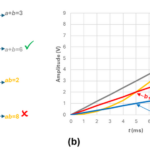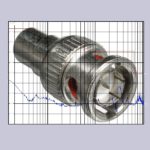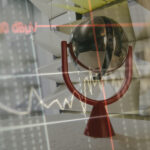Near-field probes let you find the sources of near-field and far-field EMI that ruin your design, and your day. You don’t need to know Maxwell’s Equations to troubleshoot your designs.
Most product designers are familiar with near field probes such as the H-field (loop) probe and E-field (stub) probe. You may also know how to use these probes with a spectrum analyzer to identify emissions sources on PC boards, cables, or enclosure seams. Many don’t, however, understand how to troubleshoot and mitigate EMI.
To understand the near field, consider a “point source” (electrically small) radiating E-field dipole antenna (Hertzian dipole). In the near field, the radiating electromagnetic waves will be spherical and will gradually become planar (plane waves) in the far field. As you move away from this radiating point source, the E-field (measured in volts per meter) drops off with distance. The same principle applies for an H-field (loop) point source.
In the near field, the equations for the electromagnetic (electric and magnetic) fields are complex and include factors of 1/r, 1/r² and 1/r³. Where r is the distance away from the point source radiating antenna. In other words, the field strength tends to drop off quickly in the near field. In the far field, the measured E-field drops off by a factor of 1/r primarily, as the other r terms become insignificant.
Because this conversion from spherical to planar waves is gradual, it’s difficult to definitively say where the exact transition point occurs. Most EMC engineers assume the point is at distance = λ/2π or about 1/6th of a wavelength (or, in normalized terms, r/l = 0.16). For example, at 30 MHz, this distance is about 1.6 m from the source.
If you were to plot the wave impedance (Zw = E/H, E-field and H-field plots) versus frequency for a point source (dipole or loop) antenna, we’d find that in the near field, the E-field was high (over 5 kΩ) and the H-field is minimal (about 20 Ω). If the emission source has a high current and low voltage (E/H < 377), the near field is predominantly magnetic (H-field). If the source has a low current and high voltage (E/H > 377), the near field is predominantly electric (E-field).

As we move out to the far field, the E-field and H-field wave impedances converge to approximately Zw = 377 Ω in free space (Figure 1).
We can use the concepts in the theory above to apply to measured currents and voltages on PC boards, wires, and cables. What we measure are not really “point sources” although the electromagnetic physics is the same, even for larger structures such as circuit traces, power conversion components or cables.
Most near-field probe kits come with both E-field and H-field probes. Deciding on H-field or E-field probes depends on whether you’ll be probing high switching currents — high di/dt for circuit traces, cables, etc. or high switching voltages, dV/dt for switching power supplies, etc., respectively. Both are useful for locating leaky seams or gaps in shielded enclosures.
Summary
While near-field probes are useful for identifying the various energy sources on boards, cables, or systems, they are only one component of a comprehensive troubleshooting philosophy, which will include RF current probes for measuring cable currents and close-spaced antennas to troubleshoot actual system emissions. The best part? All this may be done right on your own bench, rather than at the EMC compliance test lab.
We’ll discuss how to select and use these probes in Part 2 of this series — Part 2 will be available September 29, and Part 3 available October 2. These later articles will describe additional tools useful for troubleshooting radiated emissions issues.
References
Wyatt, Kenneth, Create Your Own EMC Troubleshooting Kit (Volume 1, 2nd Edition), Amazon, 2022
Wyatt, Kenneth, Workbench Troubleshooting EMC Emissions (Volume 2), Amazon, 2021






